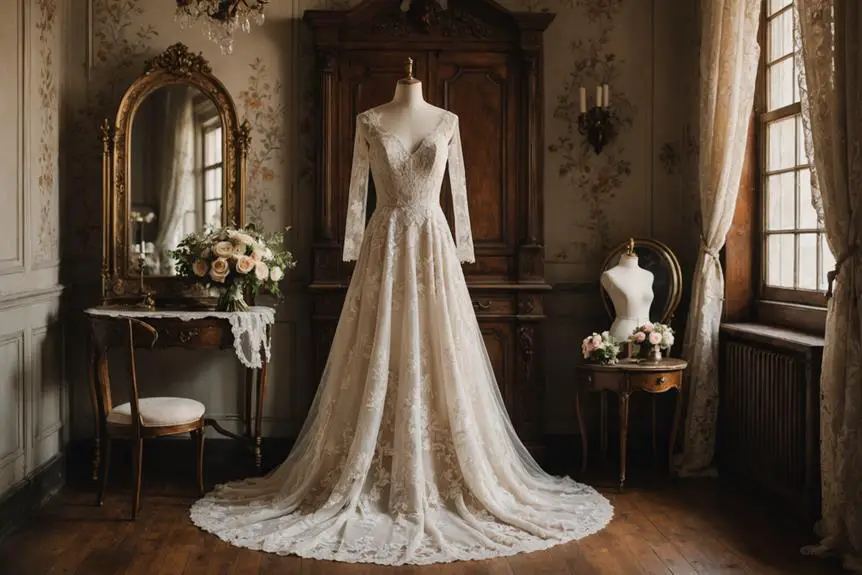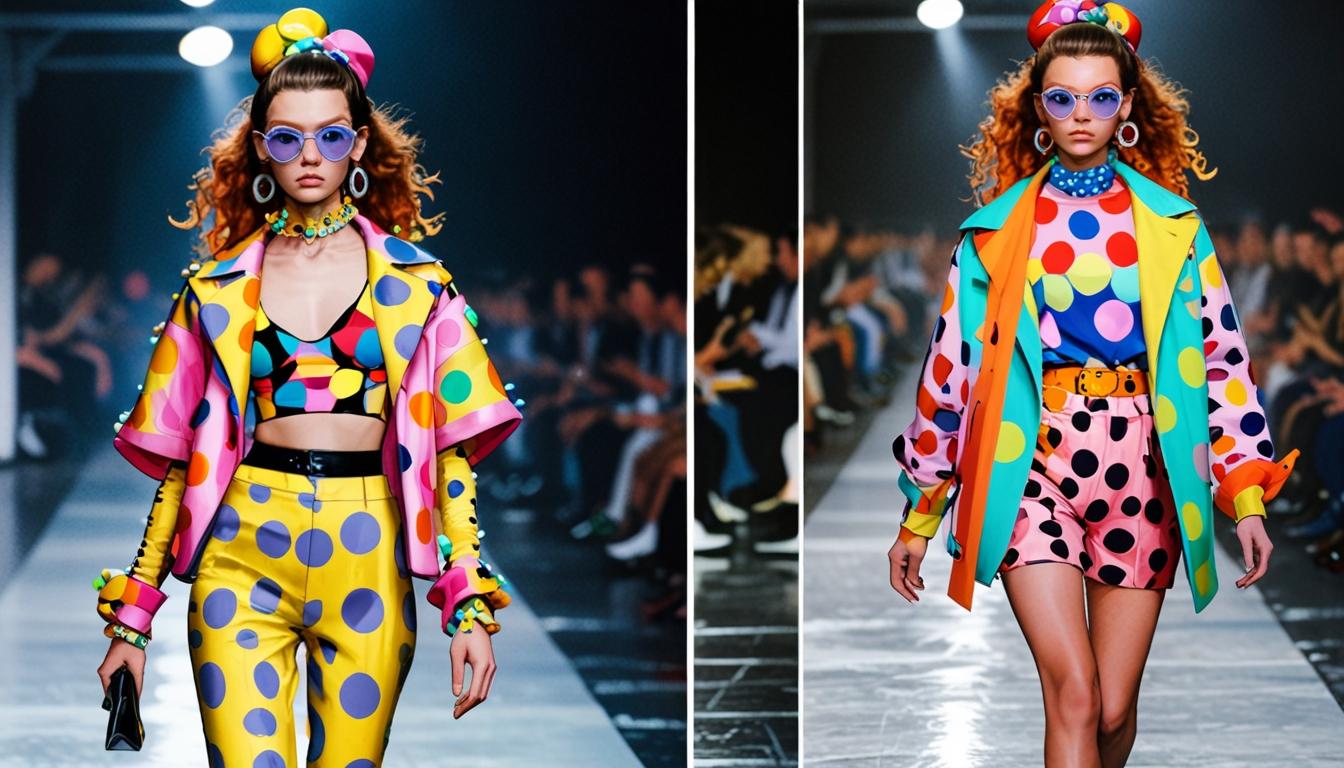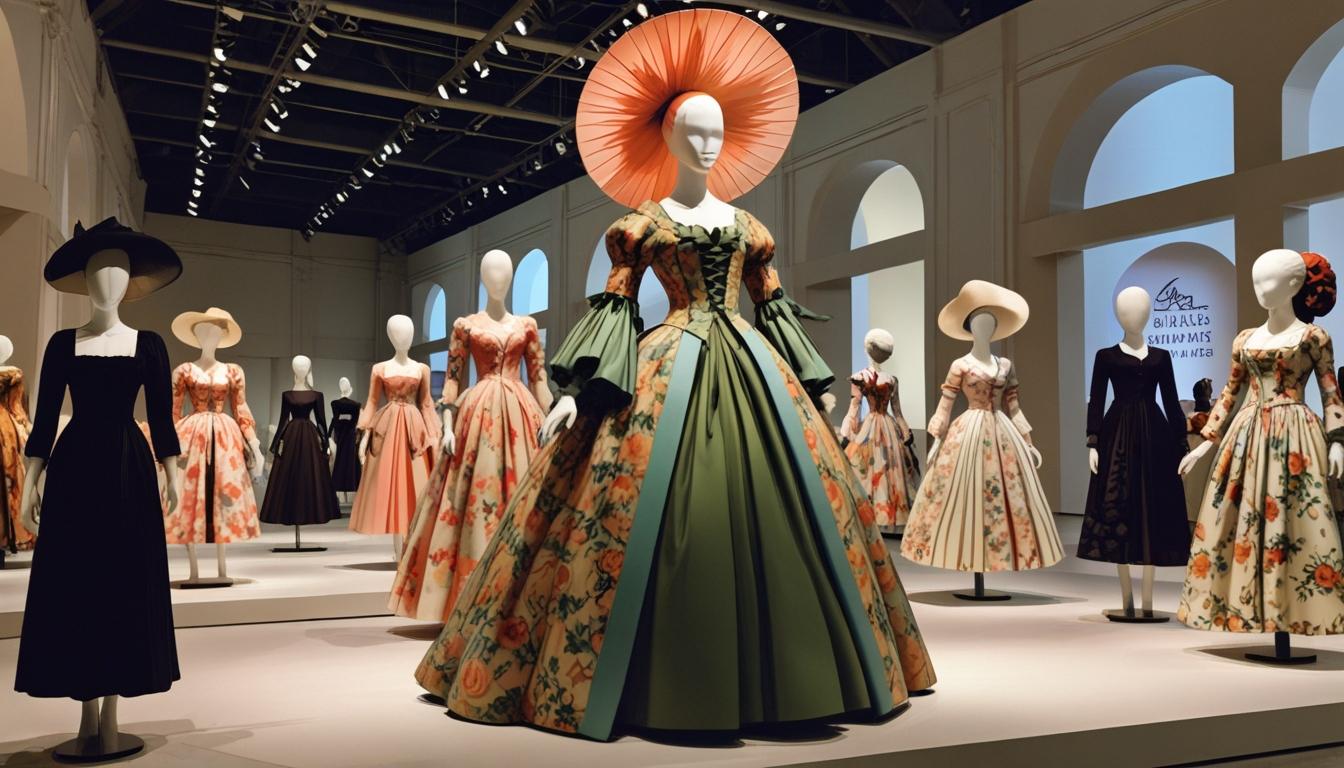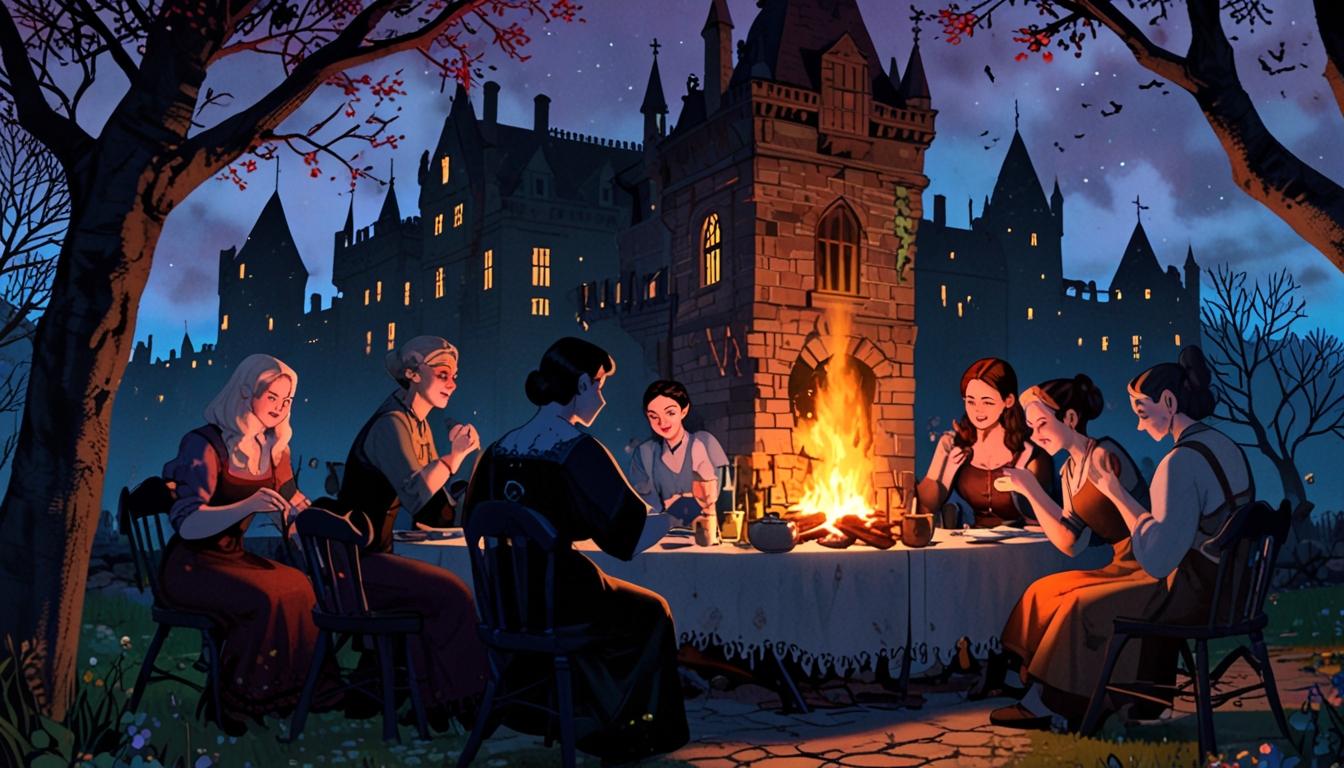Picture a bride stepping into a world of vibrant colors, where red and violet gowns once danced through ceremonies, embodying joy and fertility. As you explore the evolution of bridal wear, you'll discover how Queen Victoria's choice of white forever altered the landscape of wedding fashion. This transformation didn't stop there; it reflected broader societal changes and personal expressions that continue to shape today's diverse styles. What drove these shifts, and how do they connect to modern trends and cultural practices?
Historical Origins of Bridal Wear
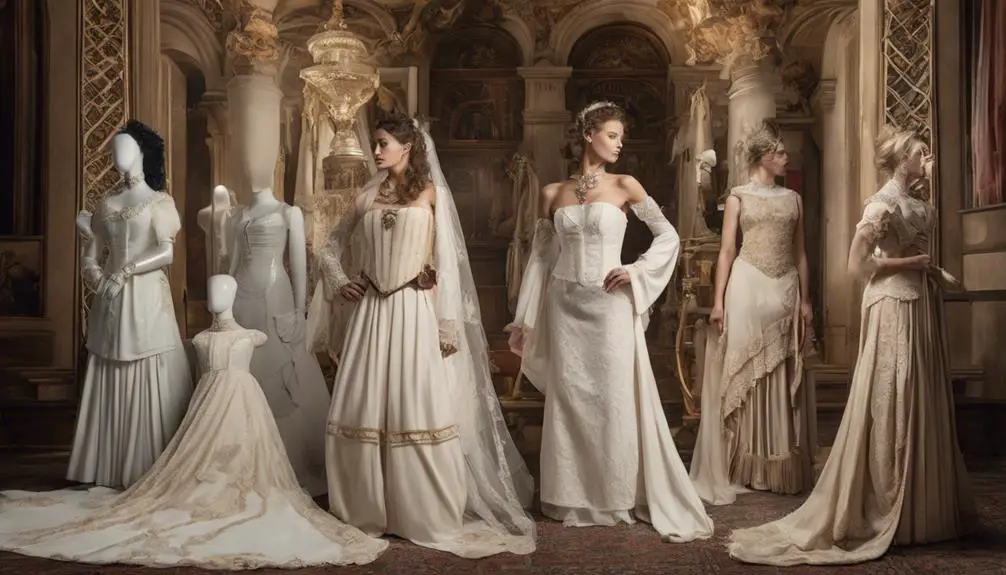
Throughout history, the origins of bridal wear reflect cultural significance and societal values. Can you believe how far we've come? In ancient times, brides wore vibrant colors like red and violet to symbolize happiness and fertility. Fast forward to the medieval era, and you'd see brides flaunting rich hues like blue, red, yellow, and green. Curiously, blue was once the color of purity long before the iconic white dress took center stage.
The first known white wedding dress was donned by Philippa of England in 1406, but it wasn't until Queen Victoria's wedding in 1840 that the white gown truly became a thing. She wore an ivory dress adorned with orange blossoms, and soon after, every bride wanted that same look! This trend set off a wave of white dresses that defined bridal attire in the Victorian era.
But remember, wedding dresses weren't just about color. They also reflected social status. Wealthier brides often wore luxurious fabrics and intricate designs, while those with less money made do with their best church dress. And let's not forget about cultural flair! Different traditions bring unique bridal wear, like the vibrant red dress in Chinese weddings, symbolizing good luck and happiness, or the elegant white kimono in Japanese ceremonies, representing purity.
19th and Early 20th Century Styles
As the Victorian era faded, bridal fashion began to evolve, reflecting broader societal changes. One of the biggest shifts happened when Queen Victoria wore her famous ivory wedding dress in 1840. This bold choice turned the white wedding dress into a global symbol of purity, forever changing bridal fashion. But let's not forget the traditions of the Victorian era, where bridesmaids dressed similarly to the bride to confuse evil spirits—a quirky custom that dates back to ancient Rome!
Moving into the Edwardian era, wedding gowns became looser and more comfortable. No more corsets! Brides embraced delicate fabrics that allowed for more movement and freedom. Then, the 1920s rolled in, bringing a whirlwind of change, especially with women's suffrage gaining momentum. You'd see lighter silhouettes, and even shorter dresses, thanks to designers like Coco Chanel. Talk about a fashion revolution!
However, the Great Depression hit in the 1930s, and that affected wedding choices too. Brides started opting for practical wedding dresses that could be dyed and worn again later. Who knew a wedding dress could pull double duty? This era reminded everyone that love doesn't have to break the bank, and affordability became a priority.
Wartime Influences on Bridal Fashion
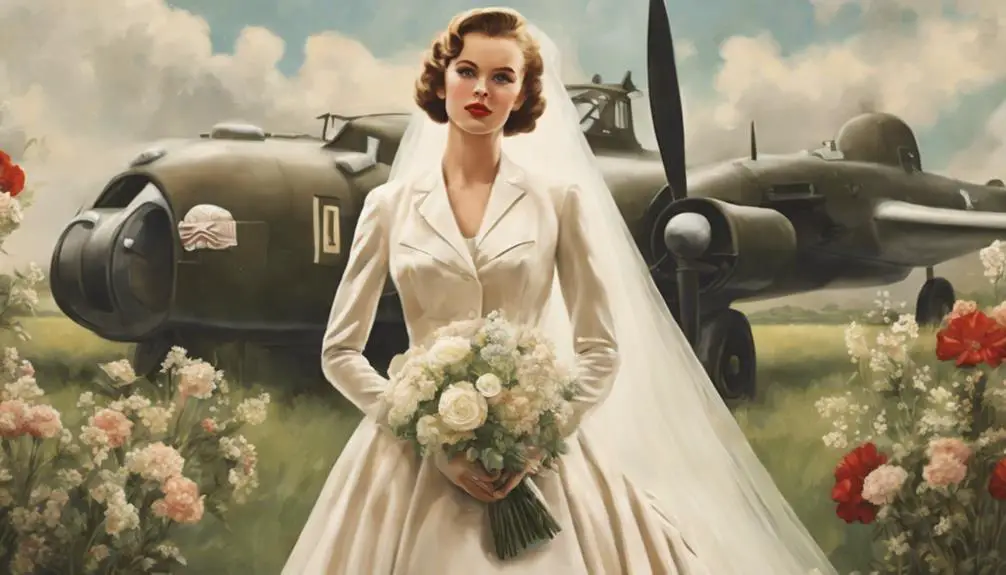
Wartime influences shook up bridal fashion in the 1940s, pushing brides to adapt their choices amid fabric shortages and rationing. Imagine being a bride during this time; you had to get creative! Many women ended up repurposing existing garments or wearing their best clothes for their big day. Wedding dresses became simpler and more modest, reflecting the reality of wartime life. A perfect example is Queen Elizabeth's 1947 wedding dress, which was elegant yet understated, showcasing the post-war sentiment.
As the war ended, Christian Dior introduced his famous "New Look" in 1947, which transformed women's fashion. This new style emphasized femininity, featuring fuller skirts and cinched waists. Suddenly, brides were dreaming of more extravagant wedding dresses again, breaking away from the modest styles that defined the wartime era.
But let's not forget the lessons learned from the Great Depression! Brides were now looking for versatile designs. They wanted dresses that could be worn again, perhaps dyed for a different occasion. This practicality marked a shift in how women approached their bridal attire.
Transformations From the 1960S to 1980S
Get ready to explore the fun and fabulous bridal styles that popped up from the 1960s to the 1980s! In the playful '60s, brides rocked shorter skirts and bright colors, while by the '80s, we saw the return of those dramatic ball gowns that made everyone feel like royalty. Isn't it wild how much fashion can change in just a couple of decades?
Playful 1960s Designs
The 1960s revolutionized bridal wear with playful designs that broke away from tradition. Gone were the days of stiff, formal gowns! Instead, brides embraced flirty wedding dresses featuring shorter skirts and vibrant colors like canary yellow. These bold choices reflected the decade's youthful spirit and cultural shifts, bringing a modern flair to the big day.
You might've noticed the innovative off-the-shoulder and strapless designs that popped up, often adorned with floral and metallic details. Talk about a fun twist! The 1960s allowed brides to express their individuality, ditching traditional norms in favor of styles that truly represented them.
As the decade progressed into the 1970s, the bridal scene got even more exciting, with bohemian flowy looks gaining popularity. Some brides loved the structured corporate chic, while others danced in their flowing dresses under the stars.
Bridal fashion was all about personal expression, and that playful vibe from the 1960s set the stage for a fabulous evolution. So, if you love the idea of a wedding dress that's as unique as you are, remember: the 1960s got it right!
Iconic 1980s Styles
Bridal fashion in the 1980s marked a dramatic shift from the playful styles of the 1960s, embracing opulence and grandeur. Remember those big ball gowns? They ruled the 1980s bridal scene! With voluminous skirts and layered fabrics, these wedding dresses made every bride feel like royalty. And who could forget Princess Diana? Her 1981 wedding dress, with that jaw-dropping 26-foot train and puff sleeves, set the standard for all things bridal.
During this era, off-the-shoulder and strapless designs gained popularity, giving brides a chance to flaunt their style in a more modern way. Bold colors, from soft pastels to vibrant hues, entered the game, allowing for tons of personal expression. Why stick to plain white when you could rock a stunning lavender gown?
Accessories became essential too! Think statement veils, oversized bows, and elaborate jewelry that added a dramatic effect to every ensemble. It was all about making a statement and having fun with your look. So, whether you dream of a classic ball gown or something bolder, the 1980s bridal fashion offers inspiration that still resonates today!
Contemporary Bridal Fashion Trends
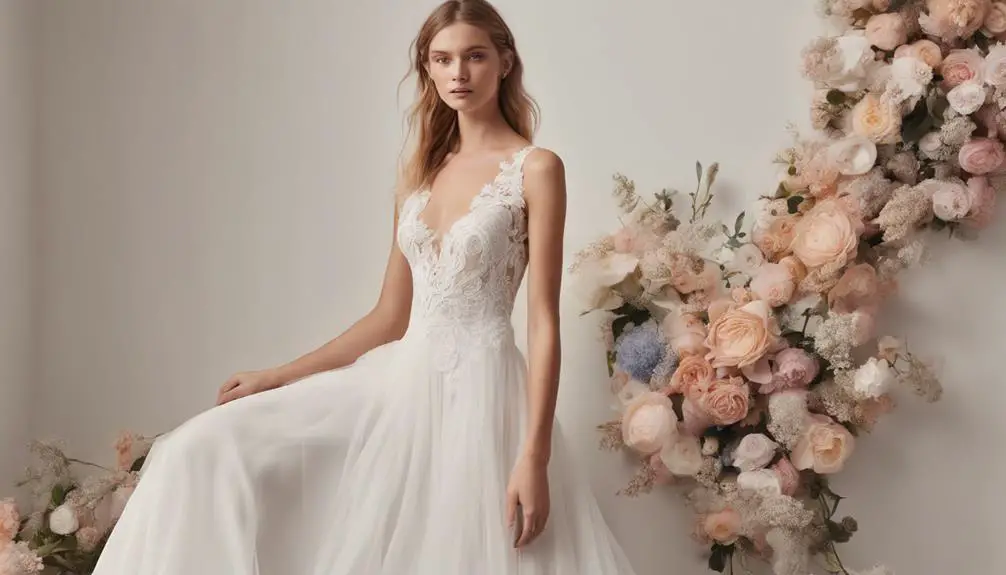
Let's chat about contemporary bridal fashion trends! Nowadays, you can really make your wedding dress your own with all the cool customization options out there. From diverse styles and fabrics to the rise of minimalism, it's all about finding what fits your vibe and makes you feel fabulous on your big day!
Diverse Styles and Fabrics
In today's wedding landscape, diversity reigns supreme, allowing brides to explore an array of styles and fabrics that resonate with their unique visions. Modern bridal fashion has something for everyone, from traditional ball gowns that make you feel like royalty to sleek, minimalistic designs perfect for intimate ceremonies. You can choose wedding dresses that match your personal aesthetics and the vibe of your special day.
When it comes to fabrics, think silk, lace, satin, and tulle. Each material offers a different texture and look, making it easier to find something that suits your seasonal considerations. Are you dreaming of a spring wedding? Light fabrics might be your best bet!
Sustainability is also a hot topic, with more brides opting for sustainable materials that align with their values. Plus, let's not forget the fun of unique embellishments! You can add those little touches that truly make your dress one-of-a-kind. With so many options available, you're bound to find the perfect style that reflects who you are and what your love story is all about. So, ready to plunge into the world of bridal fashion?
Customization and Personalization Trends
Customization trends in contemporary bridal fashion are transforming how brides approach their wedding attire, making it more personal than ever. You want your dress to reflect who you are, right? With customization, you can choose unique fabrics, colors, and embellishments that represent your style. Many brides today are opting for made-to-order dresses, taking advantage of bespoke services that cater to their individual preferences.
Wanna switch up your look throughout the day? Accessories like belts, sashes, and removable sleeves let you modify your gown for the ceremony and reception. Plus, the rise of online platforms and social media means you can discover non-traditional designs that fit your vibe.
Even high-street brands have jumped on this trend, offering affordable bridal collections that cater to various body types and styles. It's all about making your wedding attire uniquely yours! So, why settle for the ordinary when you can customize your bridal fashion to tell your story? Embrace the possibilities and make your big day even more special with personalized touches that make you shine!
Minimalism and Scalability Adaptations
Minimalism in bridal fashion has gained significant traction, with many brides choosing sleek silhouettes that emphasize comfort and simplicity. Why go overboard when you can shine in a chic, understated wedding dress? Contemporary bridal fashion now favors scalable, adaptable designs that fit perfectly with today's intimate ceremonies. You'll find that many modern wedding dresses come with versatile features like detachable trains or overlays, making it easy to transform your look for different occasions.
Sustainable fashion is a hot topic, and many designers are stepping up to the plate. They're using eco-friendly materials and promoting the idea of rewearing or repurposing your wedding attire. Imagine wearing your dress again for a special anniversary dinner! Customization is also on the rise—brides can now integrate unique fabrics, colors, and designs that reflect their personal style and wedding theme.
Cultural Variations in Wedding Attire
Wedding attire varies dramatically across cultures, each choice reflecting deep-rooted traditions and beliefs. When you think about brides around the world, it's amazing how their wedding outfits tell stories! For instance, in traditional Chinese weddings, brides often wear stunning red dresses called "qipao." The color red stands for good luck and prosperity—who wouldn't want that on their big day?
In contrast, Western brides typically don white gowns to symbolize purity. It's like they're stepping into a fairytale! Then we have Korean brides, who rock colorful silk robes known as "hanbok." With vibrant reds, greens, and yellows, these outfits burst with cultural heritage and joy.
Now, don't forget about Indian brides! They usually wear beautiful red saris or lehengas, with red representing marital bliss and fertility. Each region has its unique twist on fabrics and embellishments, making every wedding a showcase of diversity.
In Japan, brides start off in pure white kimonos, symbolizing purity and new beginnings. But wait—there's more! They often switch to colorful kimonos for the reception, blending traditions in style. And let's not overlook Vietnamese brides, who wear the elegant "ao dai," a long tunic paired with pants, often in bright colors. They might even sport Western-style dresses too!
Isn't it fascinating how each culture showcases love through their wedding attire? It's a beautiful celebration of traditions and personal stories!
Frequently Asked Questions
What Is Another Significance About the Bride's Dress?
The bride's dress embodies cultural symbolism, reflecting color meanings and fabric choices. It showcases regional variations, historical trends, and personal expressions, often serving as a family heirloom influenced by religious beliefs and societal expectations, adapting to modern tastes.
What Is the History of Wedding Dressing?
When you explore wedding dressing, you'll see how bridal fashion reflects cultural influences, color symbolism, and regional variations. Historical trends evolve, with materials, celebrity impact, and modern styles addressing sustainability issues and accessory choices.
What Did Brides Wear Before White?
Before white, brides wore traditional colors like red or blue, reflecting cultural variations. Historical fabrics and regional customs showcased symbolic meanings. Fashion trends evolved, influenced by royal choices, leading to modern adaptations in wedding ceremonies.
What Is the History Behind the Bridal Veil?
You might think veils are just fashion, but they're rich with cultural meanings. From ancient customs to modern adaptations, veil traditions symbolize purity, incorporate historical fabrics, and reflect personal significance through evolving styles and superstitions beliefs.
